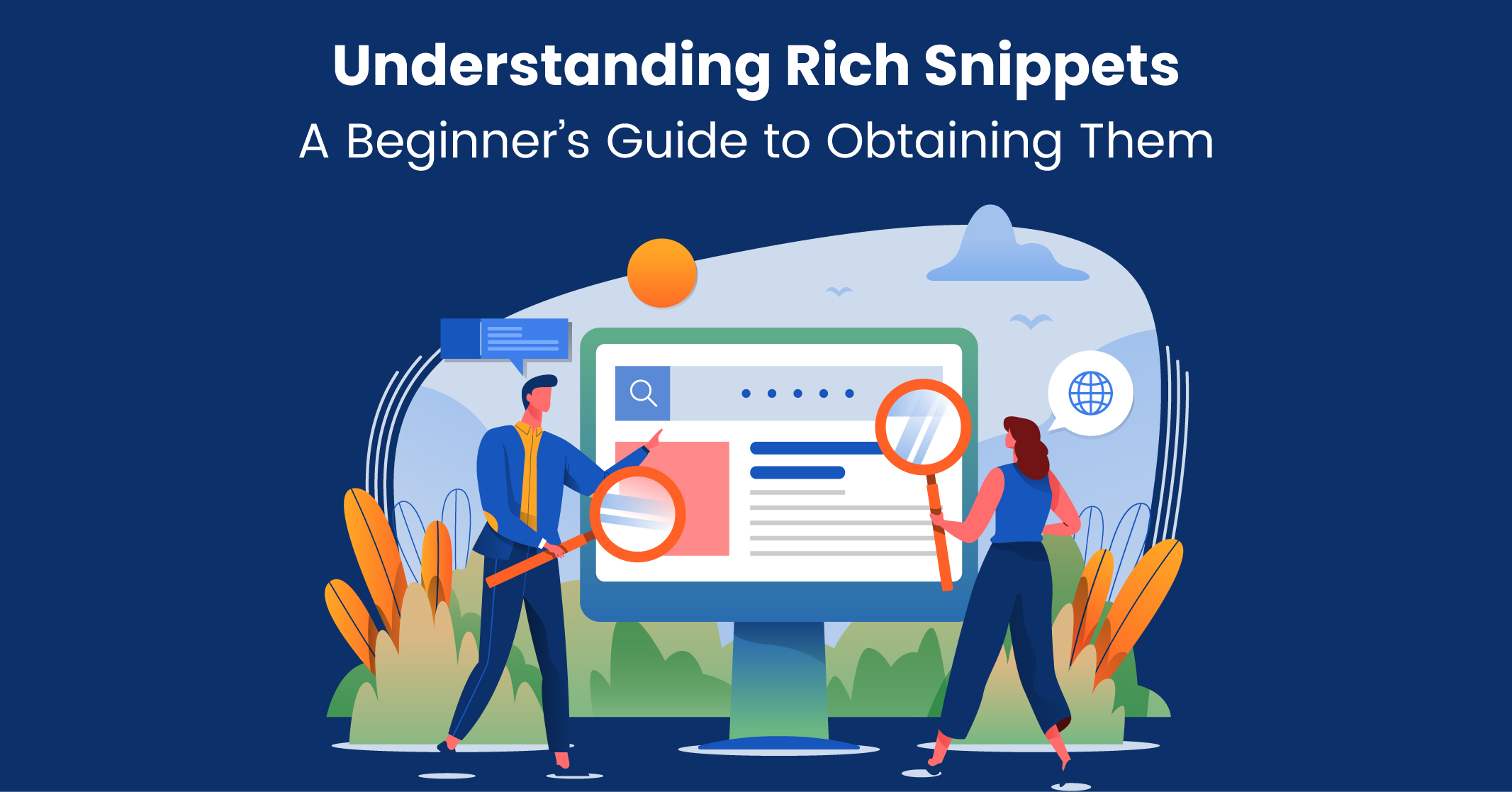I hope you enjoy reading this blog post.
If you want to get more traffic, Contact Us

Click Here - Free 30-Minute Strategy Session
Be quick! FREE spots are almost gone for this Month. Free Quote

In the fast-paced digital landscape, businesses are constantly seeking innovative ways to stand out and improve their online presence. When it comes to search engine optimisation (SEO), one strategy that has gained significant attention is the utilisation of rich snippets.
These snippets, provided by search engines like Google, have the power to enhance your website’s visibility, increase click-through rates and drive more targeted traffic to your pages.

Click Here – Free 30-Minute Strategy Session
Be quick! FREE spots are almost gone for this Month
In this blog post, we will explore the world of rich snippets and how they can positively impact your website’s performance on Google’s search results pages. We will delve into the concept of rich snippets, discuss their role in SEO and provide you with practical insights on how to implement them effectively.
So, if you’re eager to learn how to leverage the potential of rich snippets and leverage Google’s search engine to your advantage, keep reading. Let’s uncover the secrets behind rich snippets and discover how Traffic Radius can help you make the most of this powerful SEO technique.
Learn More:How to Get Featured Snippets: Optimization Tips
Rich snippets, also known as rich results, are enhanced search results on Google that display additional information, such as ratings or reviews. This extra information is sourced from structured data markup embedded in the webpage’s HTML.
In the example above, Google expands the search result to include an image, rating, review count and time estimate. These visual enhancements are designed to attract attention and encourage clicks.
It’s worth noting thatrich snippets and rich results are interchangeable terms according to Google. They both refer to search listings that display visual or interactive data. These can include ratings, event information, data sets, FAQs and more, and they can appear on any search engine results page (SERP).
Rich snippets or rich results are a type of SERP feature, which encompasses various non-standard organic listings. Featured snippets, map packs and image carousels are just a few examples of SERP features. Understanding the distinction between rich snippets and featured snippets can help optimise your SEO strategy for improved visibility on Google.
While Google claims that structured data usage is not a direct ranking factor, studies show that users are more inclined to click on rich snippets SEO than regular search results. Rich snippets enhance the visual appeal of your pages in search engine results, making them stand out.
The increased visibility of rich snippets improves organicclick-through rates (CTR). Let’s reconsider two search results: the one with rich snippets is more likely to attract clicks.
Beyond improving CTR, there is an additional SEO benefit to having rich results. Adding structured data markup to win rich snippets helps Google gain a better understanding of your page’s content. When Google comprehends your page better, it may potentially rank it higher for relevant search queries.
To optimise your use ofrich snippets, consider using a rich snippet testing tool to ensure proper implementation. By leveraging rich snippets, you can enhance your website’s visibility on Google and drive more targeted traffic.

Understanding Structured Data and Schema Markup
Structured data, conveyed through schema markup, is a standardised format that communicates information about your web page’s content to search engines. Rich snippets Schema acts as a vocabulary that informs search engines about the elements present on your page. It helps search engines understand and categorises your content accurately.
There are three main formats of markup code: JSON-LD, microdata and RDFa, with JSON-LD being Google’s preferred format. Schema.org provides a universal vocabulary for structured data and offers resources to assist in writing and testing structured data snippets.
Choosing the Right Type of Rich Snippet
Selecting the appropriate structured data markup code depends on the specifictype of Google rich snippet you want to display. It is crucial to have relevant content on your website to qualify for a specific rich snippet type. Google supports various rich snippet types and here are some examples that are relevant to many websites:
Implementing Structured Data Markup
To add structured data markup to your web pages, you can utilise Google’s Structured Data Markup Helper. Follow these steps:
Content management systems like WordPress offer plugins that simplify the implementation of structured data. Various plugins are available for WordPress, such as [mention relevant plugins.
Validating Your Structured Data
Ensure the correctness of your structured data using Google’s Rich Results Test:
Remember that implementing rich snippet examples enhances your chances of standing out in search results and capturing users’ attention with visually appealing and informative search listings.

Traffic Radius, a leading digital marketing agency, offers comprehensive solutions for tracking and optimizing rich snippets. By closely monitoring the performance of your rich snippets, Traffic Radius helps you gain valuable insights into their effectiveness. You can track important metrics such as click-through rates (CTR), impressions and conversions specific to your rich snippet listings.
Differentiating Rich Snippets vs. Featured Snippets:
While both rich snippets and featured snippets enhance search results, they serve different purposes. Rich snippets focus on displaying additional information, such as ratings, reviews or product details, while featured snippets provide concise answers to specific queries directly on the SERP.
Understanding the distinction between these two types of rich snippets is vital in optimising your SEO strategy.
The Benefits of TrackingRich Snippets with Traffic Radius:
Learn More:Spammy Structured Markup Penalty – Recovering Guide

LEAVE A REPLY